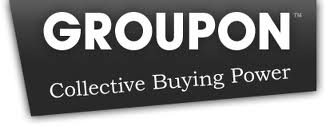As a business, television is obviously being disrupted on at least two sides. On the viewership side, lifestyle and technology changes mean less and less appointment viewing (and commercial watching). On the revenue side, pure play internet companies with wholly measurable and cost effective solutions are creating far more competition for local advertising dollars.
In the face of this, I’m fond of saying that people will always seek and find great content and money will always seek and find people. There are, however, several significant distribution, cost structure and business model hurdles standing in front of traditional broadcasters and publishers.
Where do you look for ideas and inspiration when in need of new business models due to fundamentally disruptive threat in and around your industry? Perhaps to a former Harvard Business School innovation and entrepreneurship scholar who’s since gone real world.
The keynote address below was delivered by Clark Gilbert, president and CEO of Deseret News and Deseret Digital Media, at the Borrell & Associates Local Mobile Advertising Conference last September in Dallas. I’ve watched it a few times and decided to give it the same treatment I gave a month or two ago to an excellent presentation from Gary Vaynerchuk of WineLibraryTV.com and VaynerMedia.
Based on his involvement at Harvard and in the Newspaper Next project, Gilbert makes two fundamental points about disruptive innovation. First, only 9% of companies in disrupted industries survive the shift. Let’s be generous and double that; still, fewer than one in five traditional broadcasters and publishers will survive if historical trends hold. Second, a necessary precursor to that survival is the establishment of a separate division, physical location, profit/loss statements, sales team, content team, technology team, etc. The teams should include a significant portion of “outsiders” to the traditional, disrupted industry.
Walking the talk, Gilbert now heads up the newspaper, radio, television and digital operations of Deseret Media, which is owned by the LDS church. Certainly, the Mormon connection provides several advantages, like an automatic, worldwide audience that trusts you implicitly. Regardless, he provides a ton of excellent insight in this presentation.
Because it’s a local mobile advertising conference, Gilbert covers well SMS, mobile/geo and deals programs. In addition, though, he covers his entire turf, including the insanely well-trafficked KSL.com, among other properties.
One of the more interesting themes that runs through his full presentation is mindset, semantics, framing – changing the way you talk about something in order to change the way you perceive, understand and think about it. Listen for key phrases that he repeats to help re-frame things toward a new perception or understanding.
I highly recommend the full version, but I can only embed here the 5-minute highlights edit posted to YouTube:
Borrell used this nice content tease on YouTube to drive traffic into his site for the full presentation, which can be seen here.
Here’s a content breakdown, so you can choose an appropriate in-point, should your time be limited:
1:20 The Newspaper Next project – how disruption happened in the past, historical look, put in context of newspapers
4:10 Gilbert starts, gives up on newspapers/media, refusing to learn, 10 years of communicating same message
6:10 Digital assets – what’s under his control as CEO of Deseret Media
6:45 Parallel story of disruption in another industry (mainframe, minicomputer, personal computer)
9:30 Waves of disruption, historical media trends
10:50 Empirical evidence that’s overwhelming, inarguable and irrefutable – in the face of a disruptive threat, you must have a separate division, location, p/l, sales force, content teams, etc.
12:00 Success rate of responding to predictive threat is 9%
15:30 Red Sox Nation effect – what the web allows
17:15 KSL.com stats
18:15 How he built his team
19:30 Strategy is never more than 49% of the solution
21:30 Symbiotic relationship between trust in news product and relevance in online marketplace – driving traffic
23:30 SMS – old technology, standard across platforms, local market spend forecast
26:00 Self-serve model beneficial and NECESSARY
29:00 “Deals” strategy, why you must have one
31:10 Why disruptive technology isn’t disruptive to customers who adopt it
33:30 Why Groupon, LivingSocial and other deals advertisers are vampires or leeches
39:15 Private labeling their deals program
40:00 Only legacy asset he inherited … brand trust
42:45 Why they’re selective about deals partners – don’t take all comers – elements of good partnership
45:30 How Google ruined relationship selling
48:00 Organizational structure required to live through disruptive innovation
49:45 Q&A starts
50:10 Groupon, fund raising and brand building
53:30 TV versus radio in driving subscribers to deal signups
55:00 How the sales team is organized
56:45 Cannibalization of other digital products by deals products? No Traditional media obsesses here
58:00 Digital content production – traditional journalists’ inability to decouple story telling from medium
01:00:00 Ramping up investment in digital media
01:03:30 On trust
01:05:15 Elements, factors and design of partnerships between 3rd parties and media properties
01:09:30 Optimism for media companies
Again, I highly recommend viewing the entire piece. I’ve done so several times.
If you’re inclined, please share here anything you enjoyed, disputed or wondered about Gilbert’s presentation.
